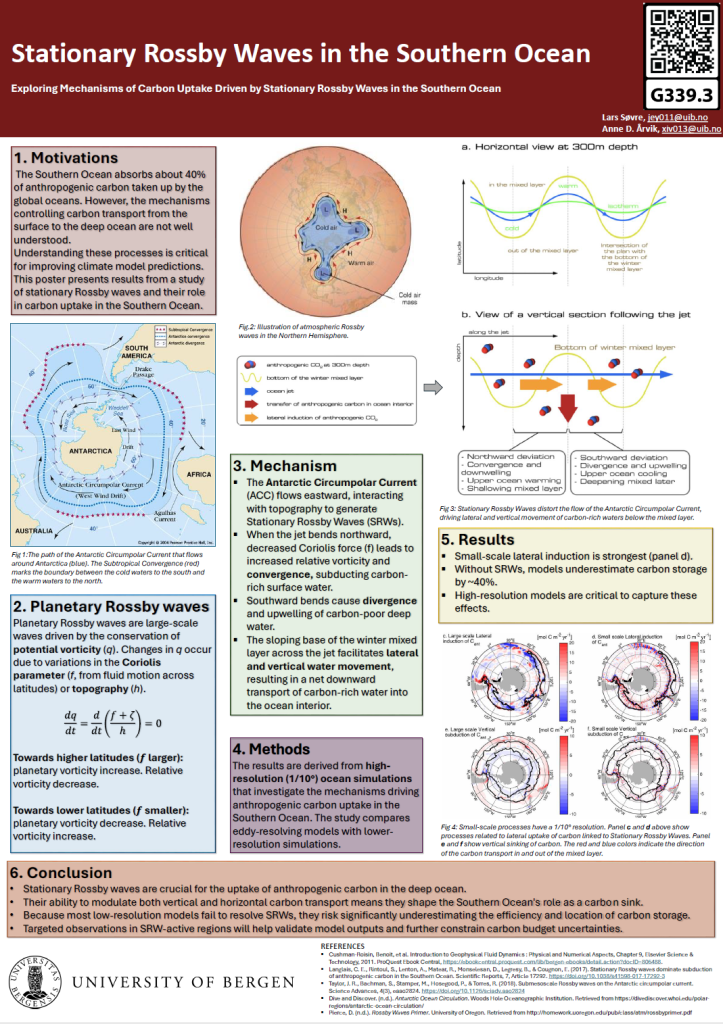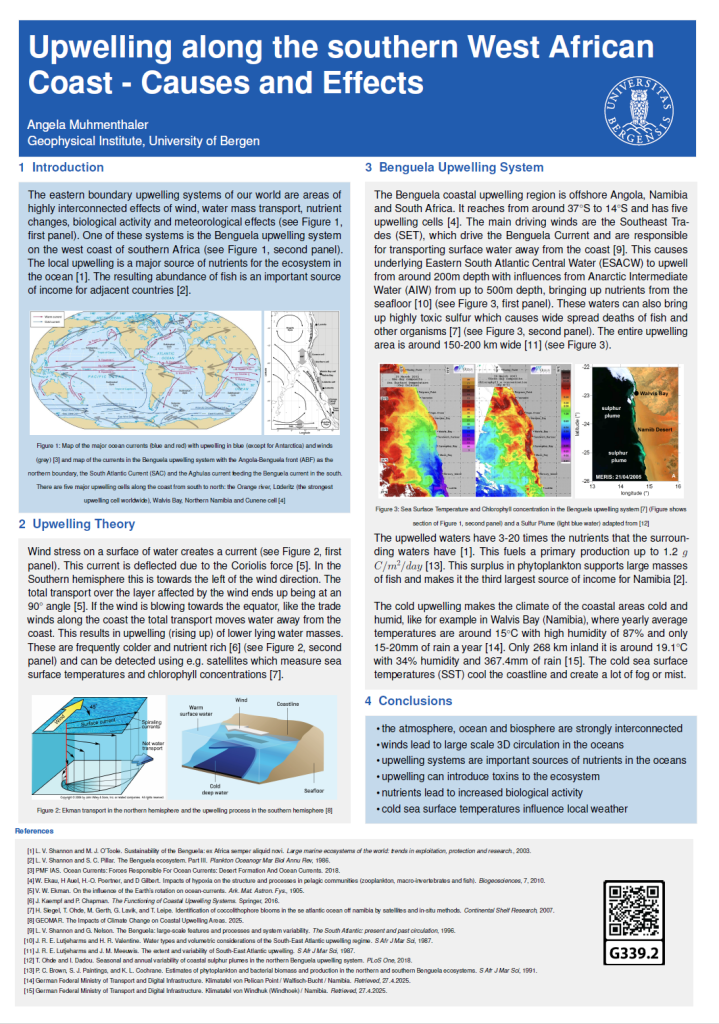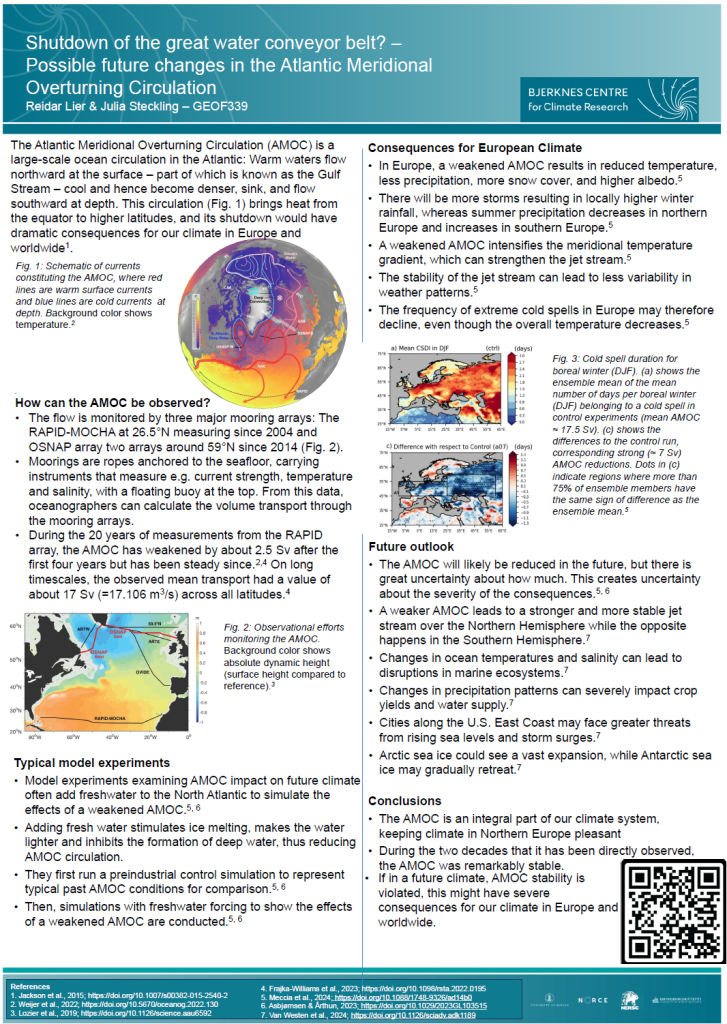Abstract
This poster explains the role of stationary oceanic Rossby waves (SRWs) in carbon uptake in the Southern Ocean. The Southern Ocean accounts for nearly 40% of global oceanic anthropogenic carbon uptake per year, yet the mechanisms transporting carbon to the interior ocean remain not well known. Planetary Rossby waves are large-scale waves driven by conservation of potential vorticity as fluid moves across latitudes, shaped by the planet’s rotation and varying Coriolis effect. SRWs are generated by interactions between the Antarctic Circumpolar Current (ACC) and topography. Because the ACC continuously flows over the same topographic features, the Rossby wave response is constantly reinforced, making them stationary. Presenting recent findings, we highlight how SRW-induced processes dominate small-scale vertical transport. This can account for a significant portion of total carbon uptake. These insights show the need for high-resolution models to accurately capture SRW dynamics and their impact on carbon capture.



